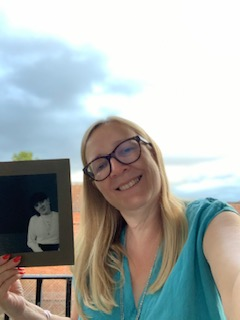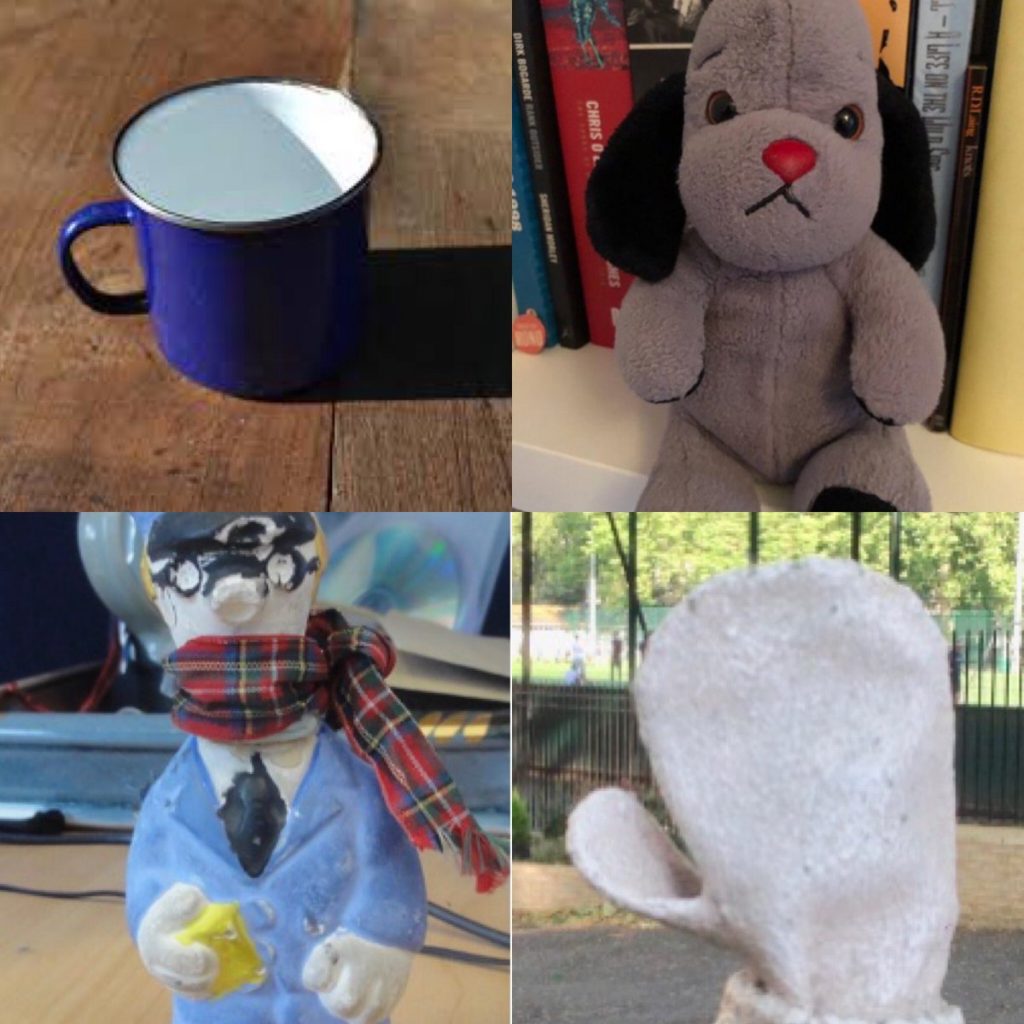
Sharing our expertise through pioneering improvement work
“Everyone should do this course!”
Lorna Jackson reflects on our "Objects & Their Stories" training

Earlier this year Lorna Jackson was one of the first people to complete a new course developed by Coram called “Objects & Their Stories”. The sessions, presented by Coram-i and CoramBAAF, are designed for foster carers and social workers to help support their personal and professional development. In this new blog, Lorna reflects on the experience.
Why I chose to attend the course
When I saw the “Objects and Their Stories” course advertised, I had an inkling that it would be very helpful for my work. I manage a Family Time service for a local authority. We take on families from other local authorities, sometimes facilitate private sessions and generally arrange for children who, for whatever reason, are separated from their parents or carers, to visit safely. We supervise those sessions and provide a safe space for them to be together. I’m quite passionate about the children who come to the centre and the work that we do.
Maintaining connections
Our families are in crisis and often the children we work with have just been removed from their carers. It’s crucial that we do everything we can to minimise any anxiety and help maintain those connections. I’ve always been interested in connections: people connecting with each other or people connecting with things. I had a strong feeling that the “Objects…” course might teach me something about that. Also, the need to respect the power of objects is something that I’ve always tried to remember in my work – previously in education – and now in children’s services.
Objects at work
I’m amazed that everyone doesn’t think more about the huge importance of these things – particularly those of us who work with children and young people. I recently had a social worker who brought in a child for a session. His Gran, who he was living with, was going away. So he was heading straight from the centre to a foster carer. His Gran had helped him pack two bags – a little rucksack and his great big suitcase. But the worker had forgotten his suitcase! So I called her and said, “you need to go back for his suitcase”. She replied “no, it’s fine he’s got his little bag with his favourite toy in and he’ll be fine for tonight”. But of course he wouldn’t necessarily have been fine. We don’t know what Gran had put it that suitcase for his first night somewhere strange. In that case might have been his pyjamas for example. Something that smelled of home, safety and familiarity. Yes, luckily he hadn’t been separated from his favourite toy but I had to tell her “no, this is so important, that link, that connection is gone. Please understand that he needs those important objects with him”. Fortunately we were able to reunite him with his case that same day.
Objects at home
We were asked to attend the course with an object that really meant something so that we could talk about it with the group. Although I had a keen sense of how learning more about objects might help in my professional life, I was surprised how hard it was to find an object with personal significance. Eventually I settled on childhood teddy but I also found a picture of myself aged fifteen and took that too – just in case. I had the two items with me when I was waiting to speak and I couldn’t decide which one had the most meaning. Then I realised that the teddy probably means more to my Mum than it does to me. So I went with the picture. Perhaps because that photograph represents a time of transition. A really special period of my life. At fifteen I’d just dyed my hair a plum colour. I loved music, I loved dancing, I was roller-skating. I was full of the optimism of youth and living my best life.
My object and me
Part of the course involves reflecting on our chosen objects and trying to understand what they mean to us. Previously I’d just looked at that photograph as a picture. One of many. Thinking about its deeper meaning really made me appreciate its significance. I was surprised at just how powerful that process was. I went into the course thinking I wasn’t a particularly emotional person, I was quite contained, I do my work well because I can maintain professional distance. But the start of the course coincided with my granddaughter – who’d been living with me under a Special Guardianship Order – preparing to leave our home. Because of that situation, the photograph of the teenage me on the verge of becoming an adult had an extra resonance.

Exploring what I felt about that photo made me think not only about my granddaughter, but about the 15–year-olds that I work with now. I found myself thinking about the difficulties that they face – completely different to anything that I was dealing with at that age. When I talked about it to the group, there was so much in the air about moving on, that I cried. I really didn’t realise how loaded that piece of paper had been for me.
The course as a safe space
What was lovely about the course was that having a group of people who hadn’t met before wasn’t an issue. We all came from different backgrounds, we all had different experiences but everyone gelled. I’m only sorry that the course happened online. It would have been great to have met the group face-to-face in a real room. Even so, we were able to share our experiences using our objects – and some were so loaded they were almost tangible. We managed to create an atmosphere where everyone could talk freely – another “safe space” if you like.
What I learned
Doing the course brought about connections for me in lots of different ways. It’s been a way of learning more about the work I do on a day-to-day basis. It’s also reminded me that it’s important to be mindful of the child in all of us. Of course, as adults we can manage some of those difficult feelings but it doesn’t make them any less powerful. The respect that you have for people’s objects must be paramount. When it comes to actual children this is even more important. A child doesn’t have the emotional literacy to explain why that teddy, blanket or stone means so much to them. Doing the course made me reflect on how I could take the knowledge and insight that I got from the sessions and use it for all the children and young people I work with.
Everyone should do this course
I’m passionate that everybody and anybody should do the course. All my team are definitely going to do it! I’ll talk about the course to anyone who wants to listen. I’ve been telling social workers, my team manager – everyone. People really need to do this course. It made me look in my own home at the objects that are there and what they mean to me. It made me pause and reflect on everything around me. Do I need these things? What do they mean to me? I learnt that I’m not emotionally attached to very many things. I discovered that I value human interaction far more than I do things. But the things that I do have are sometimes loaded beyond belief.
The Objects and Their Stories course has been developed from the innovative and pioneering work of Prof Mark Doel, building on successful pilots in Sheffield, London, New York and his original work on the Social Work in 40 Objects project. The course is designed for foster carers, social workers, and others, to build on their initial training and is a natural progression and development of life story work. The next Objects and Their Stories course will take place in February. For more information please visit the CoramBAAF website
One response to ““Everyone should do this course!””
Leave a Reply
You must be logged in to post a comment.
To find out more about what we offer to our members and how to become a member please visit the Join Coram-i page.

[…] interventions. CoramBAAF’s Hedwig Verhagen described how Coram is delivering training on the use of objects to create greater equity in life story work, through professionals showing and telling about […]